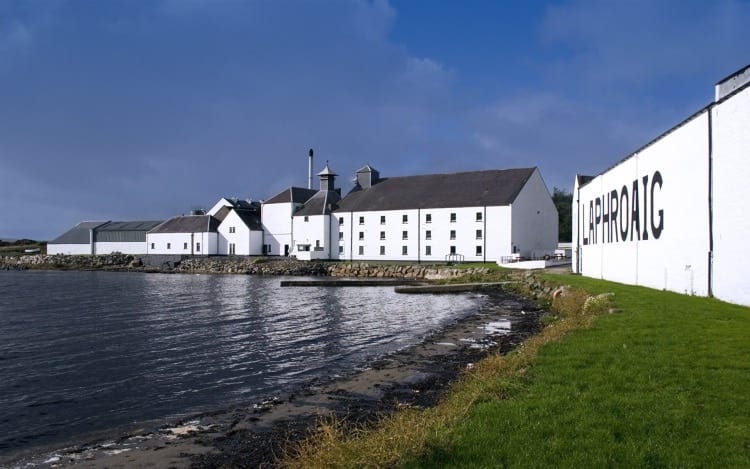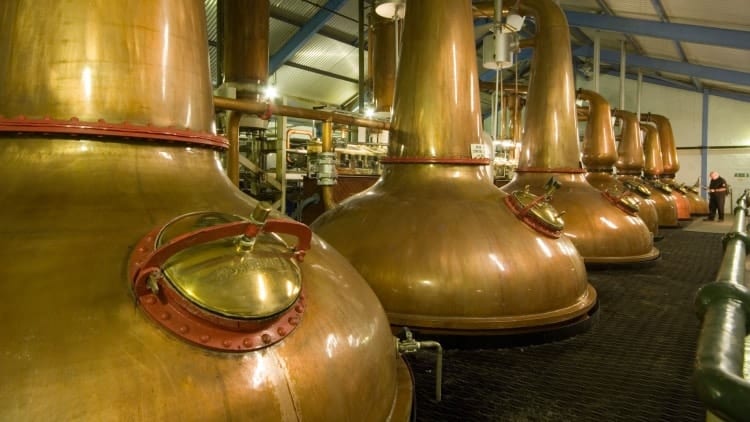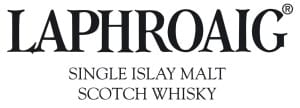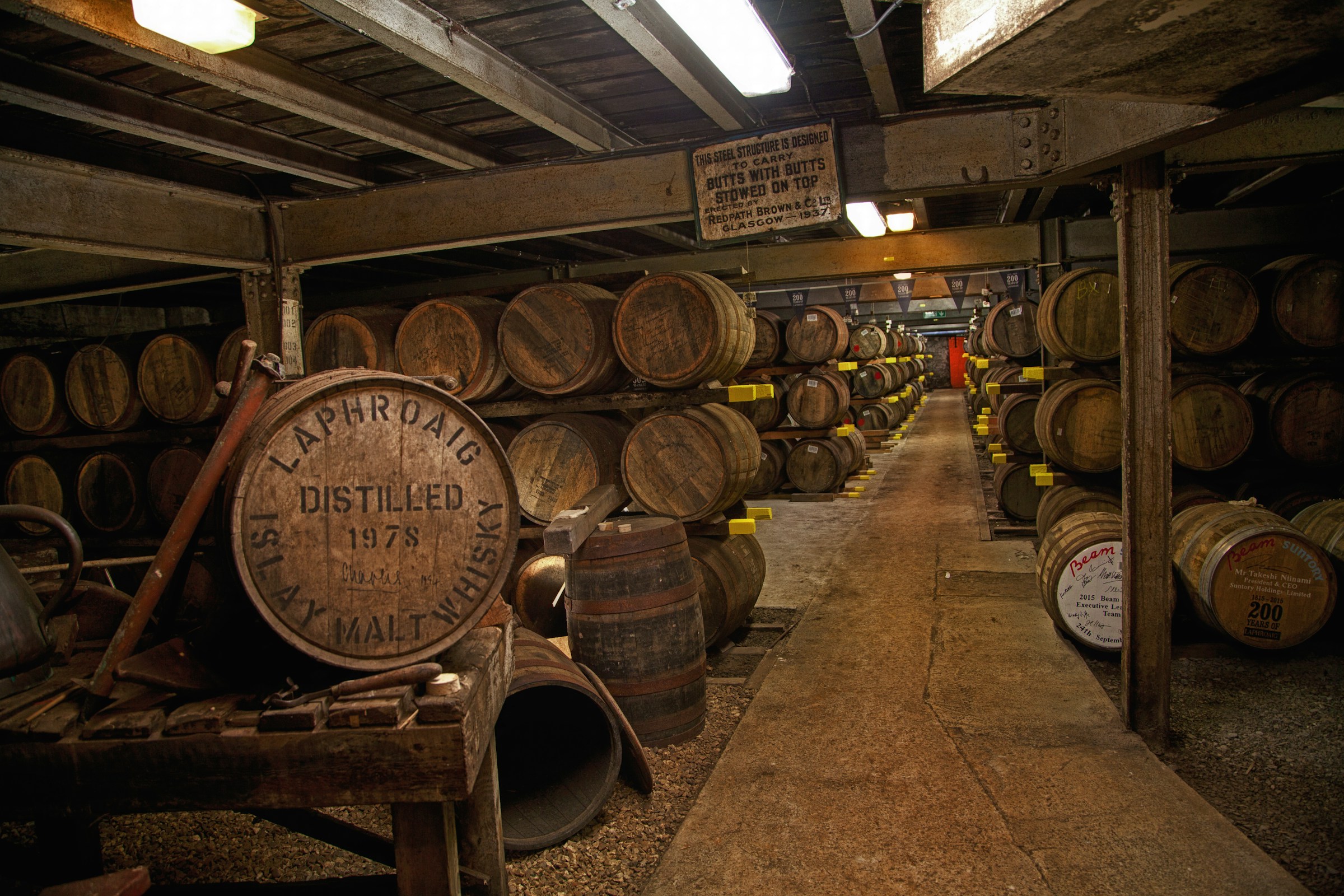Laphroaig distillery information
Perhaps the most famous of all Islay whiskies, Laphroaig started off modestly in its early days. In 1810, two brothers, Donald and Alexander Johnston leased 100 acres from the laird of Islay for rearing cattle. It is widely believed that besides the cattle, the brothers also did some illicit distilling on the land. In 1815, though, they were granted official licensing, and thus Laphroaig was officially established. In 1836, Donald bought out his brother’s share and became sole owner, with Alexander choosing to migrate to Australia. Donald remained sole owner until his untimely death in 1847, when he drowned in a vat of boiling ale. Ownership then was taken over by his uncle John Johnston who appointed Walter Graham from Lagavulin as distillery manager, as well as employed the help of a local farmer, Peter McIntyre, as Donald’s’ heir was only 11 years old at the time.

In 1857, the son, Dugald gained ownership, and he received help from his cousin Alexander Johnston. They ran the distillery together until Dugald died in 1877. Alexander died shortly after and left the distillery to his sisters Isabella (Mrs William Hunter) and Katherine Johnston, and his nephew J. Johnston-Hunter. Around this time, Laphroaig had a dispute with a close neighbor (Mackie’s and co) who bought about half the distillery’s production for blending. In 1908, these neighbors attempted to block and divert the water source for Laphroaig. Court action was quickly taken to set this right, but Mackie’s was not done yet. He hired the head brewer from Laphroaig and had replicas of their stills made, in an attempt to simply copy the whisky. Luckily this failed, and despite costing the company a lot of time and money, Laphroaig continued to thrive.
Come 1921, Ian Hunter (The son of William Hunter) took over daily management of the distillery, and in that capacity ended up purchasing the lands, as well as increasing the capacity of the distillery doubling the amount of stills from 2 to 4. Ian Hunter is also credited with being the first of the Scottish distillery owners to start using American Oak barrels. Until then, Spanish oak Sherry casks were the cask of choice for the whisky-makers. Until this very day, first-fill Bourbon casks are used for the maturation at Laphroaig. Ian proved his wits once more when during the American prohibition, he convinced custom officials that due to the iodine smell of the whisky, it surely should be granted medicinal status, which allowed him to continue exporting to the United States.
When Ian passed away without any heirs in 1954, he left the distillery to his trusted secretary Bessie Williamson, who ran the distillery as one of the first (and only) female distillery managers. In the 1960s, recognizing that in order to keep on growing, Laphroaig would need a strong international partner, she sold the distillery to Long John International. 1967 saw the addition of a 5th still. Bessie herself retired in 1972; the same year that 2 more stills were added, bringing the total to 7; the same number as in use today.

In 1990, Allied Domecq acquired the distillery, and their nurturing was crucial in it becoming the leading selling Islay whisky, and the world’s fastest selling single malt. In 1994, HRH Prince Charles visited the distillery, declaring he thought Laphroaig was “the finest whisky in the world”.
Laphroaig whisky
Due to slow heating, the reflux (where vapors fall back into the still, thus achieving additional contact with the copper for maximum chemical reactions) at Laphroaig is minimal. The stills have lyne arms that, rather than pointing down as is common in the industry, actually are sloping upwards, which ensures the heavier oils and flavors fall back into the still. This leads to a light end product (though heavily smokey due to the peating earlier in the kilning process). The 7th still (the 4th spirit still) is used to distill remnants of previous distillations; the foreshots and feints are mixed with a part of low wines, and are then mixed with the spirits collected at the regular distillation. This leads to more balanced product.
The core Laphroaig range consists of the following:
- Select; introduced in 2014, the Select is a non-age statement whisky.
- 10 Years Old; heavily peated, smokey,briny and medicinal.
- 18 Years Old (which in 2009 replaced the 15 Years Old) ; slightly more temperate than its younger sibling.
- 25 Years Old; matured in both American Bourbon barrels as well as Spanish sherry casks.
- Cask Strength; bottled at 55-57% abv, this all natural whisky has not been deluded with water.
- Quarter Cask; double matured first in regular Bourbon casks, and then transferred into in much smaller than usual casks, this spirit has had extensive interaction with wood, which ensures a smoother dram.
- Triple Wood; Like Quarter Cask, this whisky starts in normal Bourbon barrels, and then is transferred to quarter casks. It finishes with a third maturation in ex-Olorosso Sherry casks.
- Px Cask; This whisky, too, starts off maturation in Bourbon barrels, then switches to Quarter Casks, and it then is further matured in Pedro Ximenez (PX) Sherry casks.
- QA Cask; A No age statement whisky, enjoying a first maturation in Bourbon barrels, it is then double matured into charred American white oak casks (quercus alba (QA) in Latin). Travel retail only.
- An Cuan Moar (Big ocean); Started off in Bourbon barrels, and enjoying a second maturation in European Sherry casks. Travel retail only.
There is also a limited edition Cairdeas released every year to celebrate the Feil Isle festival on Islay.
Distillery info:
| Name | Laphroaig |
| Region | Islay |
| Logo |  |
| Status | Active |
| Founded | 1815 |
| Water source | Kilbride stream |
| Owned by | Beam Suntory |
| Address |
Laphroaig Distillery +(44) 1496 302418 |
| Visitor centre | Yes |
| Website | http://laphroaig.com/ |
| https://twitter.com/Laphroaig | |
| http://www.facebook.com/laphroaig | |
| Community | Friends of Laphroaig |
| Map |
Distillery Setup:
Component |
Capacity |
Quantity |
|---|---|---|
| Mash tun | 8.5 tonnes | 1 (Lauter tun) |
| Washback | 53,000 litres | 6 (stainless steel) |
| Wash still | 10,400 litres | 3 |
| Spirit Still | 3 * 4,700 + 1 * 9,400 litres | 4 |
| Expected yearly output in LPA (Litres of pure alcohol) | 2,600,000 |
